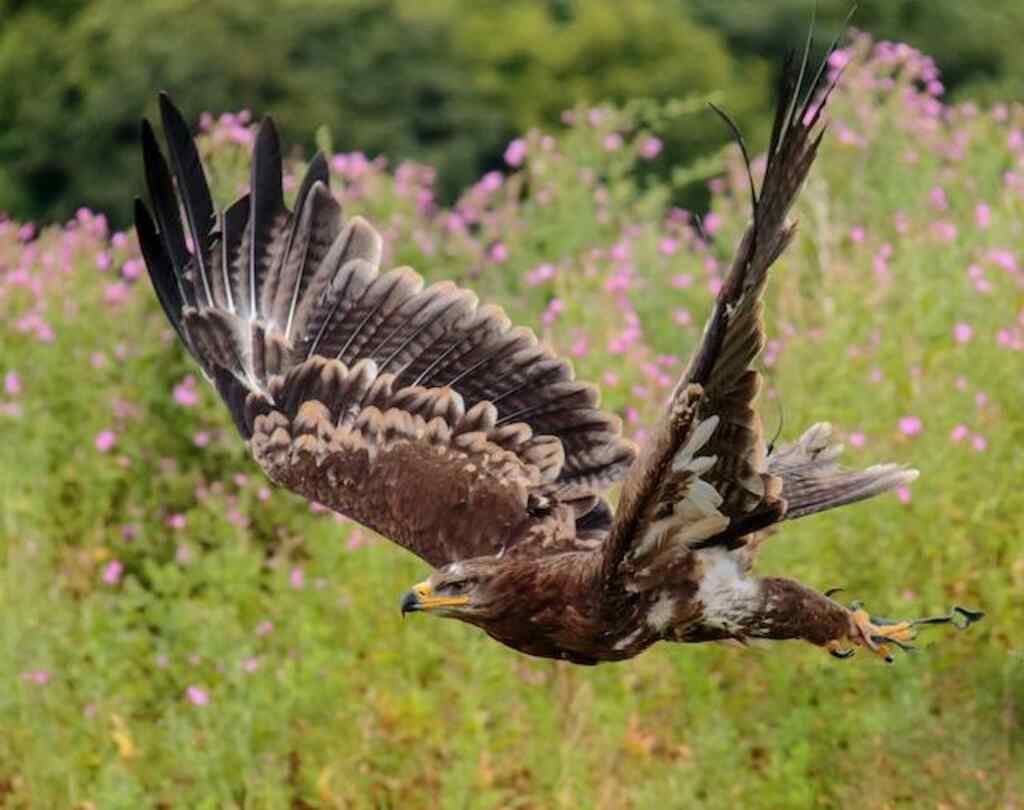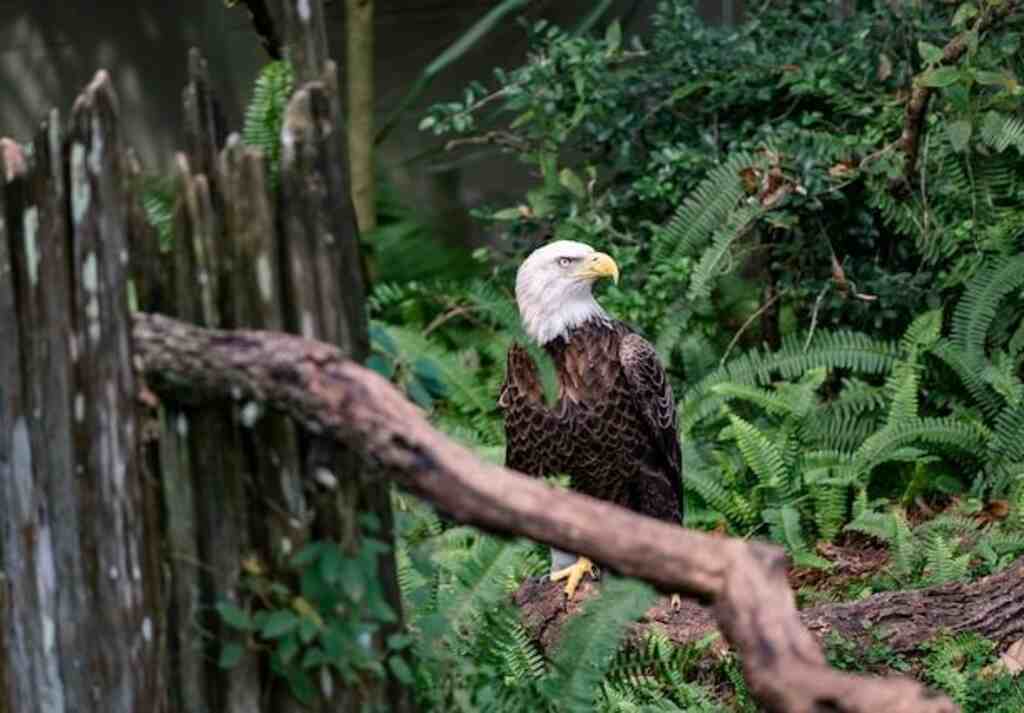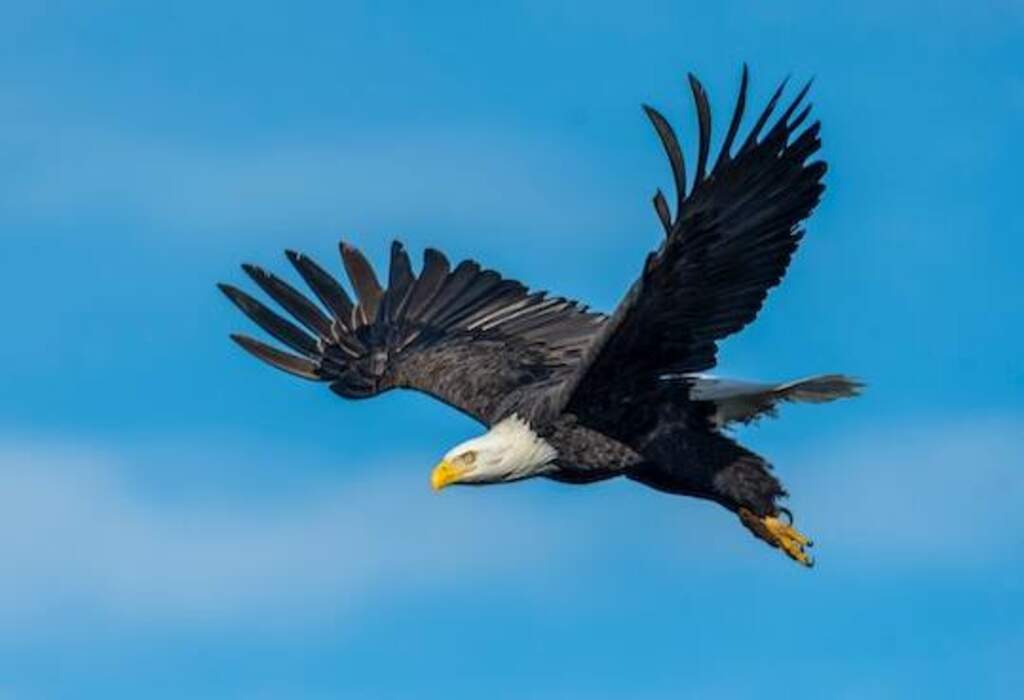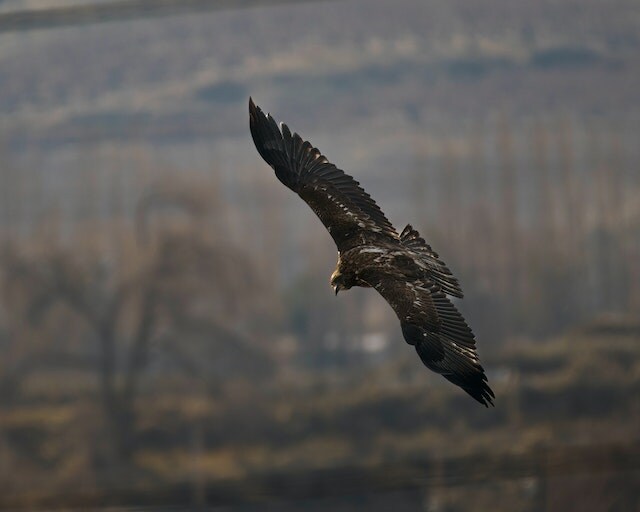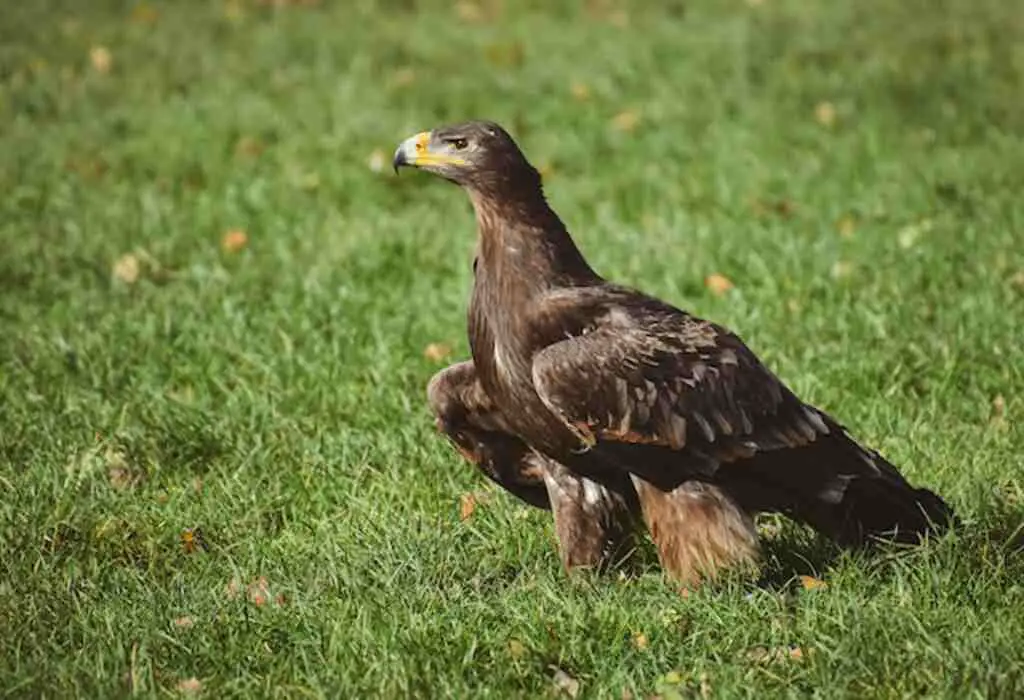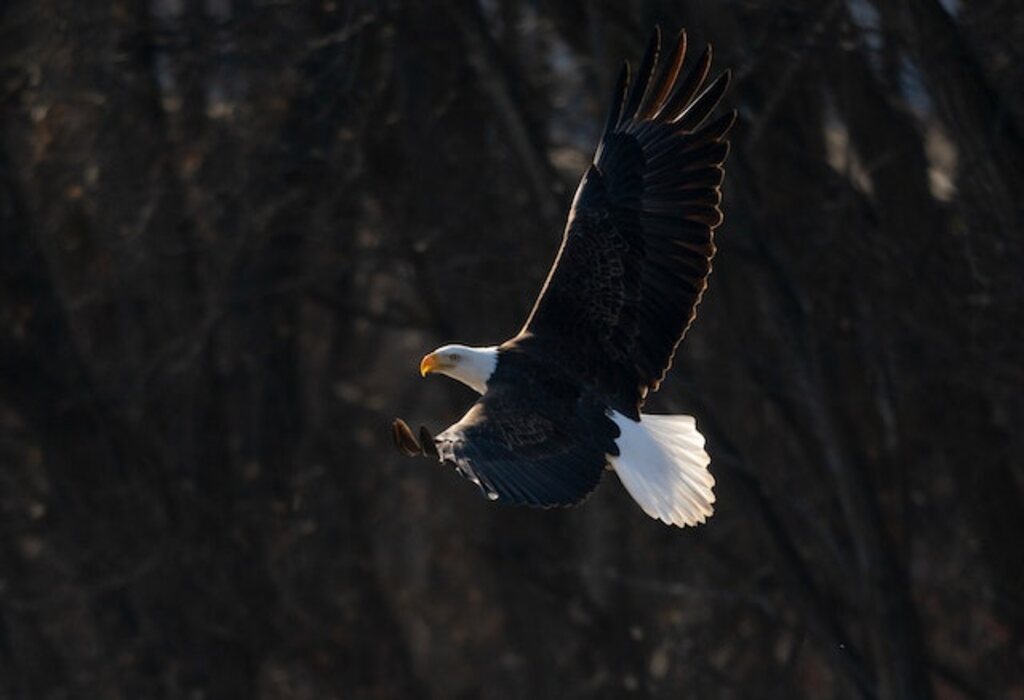In the vast avian kingdom, an epic battle rages between two formidable predators: the eagle and the hawk. But do eagles eat hawks?
Through an exploration of their diets, hunting strategies, and interactions, we unravel the truth behind this enigmatic relationship. Join us on this scholarly journey of discovery and understanding.
Table of Contents
- 1 Key Takeaways
- 2 Do Eagles Eat Hawks
- 3 The Diet of Eagles
- 4 The Diet of Hawks
- 5 Distinctions Between Eagles and Hawks
- 6 Interactions Between Eagles and Hawks
- 7 Predation Among Raptors
- 8 Feeding Habits of Eagles
- 9 Feeding Habits of Hawks
- 10 Rare Instances of Eagle-Hawk Predation
- 11 Common Misconceptions About Eagle-Hawk Interactions
- 12 Frequently Asked Questions
- 13 Conclusion
- 14 Author
Key Takeaways
- Eagles primarily eat small mammals, fish, and birds, including hawks.
- Predation between eagles and hawks is rare but can occur, with larger eagle species known to prey upon hawks.
- Eagles prey on hawks to establish dominance within the avian hierarchy and regulate hawk populations.
- Differences in hunting strategies and habitat preferences allow eagles and hawks to coexist in the same ecosystem.
Do Eagles Eat Hawks
While it is rare, eagles have been known to prey on hawks. Eagles and hawks are both powerful raptors, but eagles are generally larger and more dominant.
Interactions between them can result in occasional instances of eagle-hawk predation, highlighting the complex dynamics within the avian world.
The Diet of Eagles
The diet of eagles primarily consists of small mammals, fish, and birds, including hawks. Eagle feeding patterns vary depending on the species and habitat, but most eagles are opportunistic hunters, meaning they will consume whatever prey is available.
They are known for their keen eyesight and powerful talons, which they use to catch and kill their prey.
Eagles have various hunting techniques, such as soaring high in the sky and scanning the ground for potential prey, or perching on a high vantage point and waiting for an opportunity to strike.
They are also known to engage in aerial pursuits, chasing their prey in mid-air.
These hunting strategies allow eagles to effectively capture and consume a wide range of prey, including hawks.
Transitioning into the subsequent section about the diet of hawks, it is interesting to note the similarities and differences between these two raptor species.
The Diet of Hawks
One intriguing aspect of the diet of hawks is their preference for small mammals and birds as their primary sources of food. Hawks exhibit a diverse range of prey preferences, which can vary depending on the species and habitat they inhabit.
Here are four key points about the diet of hawks:
- Small mammals: Hawks are known to target small mammals such as mice, moles, and rabbits. They use their sharp talons to catch and kill these prey items.
- Birds: Hawks are skilled avian predators and often hunt other birds. They may target small songbirds, waterfowl, or even larger birds like pigeons and crows.
- Insects and reptiles: While small mammals and birds make up the majority of their diet, hawks also consume insects and reptiles like snakes and lizards, especially when other prey is scarce.
- Dietary variations: The specific prey preferences of hawks can vary based on factors such as geographic location, season, and the availability of prey species in their environment.
Understanding the diverse diet of hawks allows us to appreciate the distinctions between eagles and hawks in terms of their feeding behaviors and ecological roles.
Distinctions Between Eagles and Hawks
Distinct from hawks, eagles showcase a significantly larger wingspan, with some species reaching up to 7 feet, allowing them to soar effortlessly through the skies.
This physical distinction enables eagles to utilize different hunting strategies compared to hawks.
While hawks are known for their agility and speed in capturing prey, eagles rely more on their size and strength.
Eagles often hunt larger prey, such as mammals and fish, using their powerful talons to snatch and carry them.
Hawks, on the other hand, prefer smaller prey and tend to rely on their swift flight and sharp vision to catch their meals.
These distinctions in hunting strategies reflect the unique adaptations and ecological niches of eagles and hawks.
Transitioning into the subsequent section about interactions between eagles and hawks, it is important to explore how these differences impact their dynamic coexistence in the natural world.
Interactions Between Eagles and Hawks
Interactions between eagles and hawks in the natural world reveal a complex dynamic shaped by their contrasting hunting strategies and ecological niches.
Eagles are known for their powerful and soaring flight, enabling them to hunt for larger prey such as fish and mammals.
In contrast, hawks possess exceptional agility and speed, allowing them to capture smaller prey like rodents and birds.
Despite these differences, eagles and hawks often share the same hunting grounds, leading to occasional encounters and interactions.
These interactions can range from territorial disputes to cooperative hunting, where eagles and hawks work together to capture elusive prey.
Understanding the hunting behaviors of raptors, including eagles and hawks, is crucial for comprehending their ecological roles and the overall functioning of ecosystems.
Predation among raptors will be explored in the subsequent section, shedding light on the fascinating world of avian interactions.
Predation Among Raptors
Predation among raptors encompasses both intra-species and inter-species interactions, which play a crucial role in shaping their population dynamics.
Intra-species predation occurs when individuals of the same species prey upon each other, resulting in competition for resources and potential population regulation.
Inter-species predation, on the other hand, involves raptors preying upon individuals of different species, and can influence community structure and species composition.
Various factors, such as habitat availability, prey abundance, and territoriality, can significantly influence the predation behavior of raptors, highlighting the complex dynamics of these interactions.
Intra-species Predation
In the realm of avian hierarchy, the majestic eagles have been observed to occasionally engage in a formidable display of dominance by preying upon their aerial counterparts, the hawks.
Intra-species predation among raptors, such as eagles and hawks, is not uncommon and can arise due to various factors, including intra-species aggression and territorial disputes.
This phenomenon is often witnessed in areas where resources are scarce, leading to intense competition between individuals of the same species.
Eagles, being larger and more powerful than hawks, have the advantage in such confrontations and are known to actively target and prey upon hawks, especially when their territories overlap.
This intra-species predation serves as a means for eagles to establish and maintain their dominance within the avian hierarchy.
Moving on to inter-species predation, the dynamics shift as eagles and hawks may find themselves in a different role as predator or prey.
Inter-species Predation
A dramatic scene unfolds as the majestic eagles soar through the sky, their powerful talons gripping tightly onto their unsuspecting prey.
Interactions between predators play a crucial role in shaping ecosystems. When considering inter-species predation, eagles are known to prey upon smaller birds, including hawks.
This predatory behavior has several impacts on the ecosystem.
- Population control: By preying on hawks, eagles help regulate their population, preventing overpopulation and potential negative consequences such as competition for resources.
- Trophic cascades: The presence of eagles as predators influences the behavior and distribution of hawks, altering their foraging patterns and potentially affecting the populations of their prey.
- Biodiversity: Interactions between eagles and hawks contribute to maintaining biodiversity within ecosystems, as their predation acts as a natural selection pressure, favoring individuals with advantageous traits.
Understanding the complex interactions between predators and their impacts on ecosystems is essential for comprehending the delicate balance of nature. Factors influencing predation behavior will be explored in the subsequent section.
Factors Influencing Predation Behavior
Factors such as habitat characteristics, prey availability, and predator adaptations heavily influence the behavior of predators in their quest for food.
When it comes to inter-species predation, these factors play a crucial role in determining the success of hunting.
For eagles and hawks, their feeding habits are influenced by similar factors. Both species rely on factors affecting hunting success, such as the abundance and distribution of prey in their respective habitats.
They also face competition for prey resources, as they often target similar small mammals and birds.
Additionally, their adaptations, such as sharp talons and keen eyesight, enable them to effectively capture and kill their prey.
These factors collectively shape the predation behavior of eagles and hawks, leading to variations in their hunting strategies and success rates.
Understanding these influences is essential in comprehending the feeding habits of eagles and transitioning into the subsequent section about their specific behaviors and diets.
Feeding Habits of Eagles
The feeding habits of eagles encompass their preferred prey, hunting strategies, and scavenging behavior.
Eagles have a diverse diet that consists of various prey species, including fish, small mammals, birds, and reptiles.
They employ different hunting strategies based on their prey, such as aerial hunting, perch hunting, and stealthy stalking.
Additionally, eagles are opportunistic scavengers and often feed on carrion, taking advantage of food sources readily available in their environment.
Preferred Prey
One common prey item for eagles is hawks, which they consider as a delectable delicacy in their diet. Eagles are opportunistic hunters and will take advantage of any available food source, but they do have preferences when it comes to their prey.
Some of the preferred prey items for eagles include:
- Small mammals: Eagles have been known to target small mammals such as rabbits, squirrels, and even small deer. They use their powerful talons to catch and kill these prey items.
- Fish: Eagles are also skilled fish hunters. They will soar over bodies of water and then dive to snatch fish from the surface with their sharp beaks.
- Waterfowl: Ducks, geese, and other waterfowl are also on the menu for eagles. They will often take advantage of these birds when they are in large groups, making it easier for the eagle to catch them.
These are just a few examples of the preferred prey for eagles. Their hunting techniques and abilities allow them to thrive in various habitats and adapt to different food sources.
In the next section, we will explore their hunting strategies in more detail.
Hunting Strategies
Eagles employ a variety of hunting strategies to secure their preferred prey, showcasing their remarkable adaptability and resourcefulness in acquiring food.
These hunting techniques vary depending on the species of eagle and the environment in which they reside.
Some eagles, such as the golden eagle, are known for their aerial hunting prowess.
They utilize a combination of soaring, diving, and stooping to catch their prey, which can include small mammals, birds, and even fish.
Other eagles, like the bald eagle, are skilled at hunting from a perch or by soaring over water bodies, where they can swoop down to snatch fish near the surface.
These hunting strategies demonstrate the eagles’ ability to exploit different ecological niches to fulfill their prey preferences.
Transitioning into the subsequent section, eagles also exhibit scavenging behavior, which further contributes to their diverse feeding habits.
Scavenging Behavior
Scavenging behavior is an additional component of eagles’ feeding habits, showcasing their ability to exploit various food sources in their environment.
Eagles are known to scavenge on carcasses of animals that have died from natural causes or have been killed by other predators.
This behavior allows them to supplement their diet with readily available food, especially during times when hunting may be challenging.
Although eagles are primarily skilled hunters, their scavenging behavior demonstrates their adaptability and opportunistic nature.
Prey preferences can vary among different species of eagles, but they generally feed on a wide range of animals, including fish, mammals, reptiles, and birds.
This versatility in food choices enables eagles to thrive in diverse habitats and ensures their survival in various ecological niches.
Transitioning to the subsequent section about the feeding habits of hawks, it is important to note that hawks also exhibit scavenging behavior, albeit to a lesser extent.
Feeding Habits of Hawks
The intricate dance between predator and prey unfolds in the feeding habits of hawks, as they embark on a relentless pursuit of sustenance.
Hawks employ a variety of feeding strategies and hunting patterns to secure their meals.
These include soaring high above the ground, scanning the landscape with their keen eyesight, and swooping down with incredible speed and precision to capture their prey.
Hawks are known to feed on a diverse range of animals, including small mammals like mice and rabbits, as well as birds, reptiles, and even insects.
They possess strong talons and sharp beaks, which enable them to grasp and tear apart their prey.
Additionally, hawks are skilled at catching their prey mid-flight, using their agility and maneuverability to their advantage.
These feeding habits of hawks set the stage for the rare instances of eagle-hawk predation, which will be explored in the subsequent section.
Rare Instances of Eagle-Hawk Predation
In rare instances, the phenomenon of predation between eagles and hawks unveils a fascinating dynamic in the natural world.
Raptor interactions often involve competition for resources, with larger species typically dominating smaller ones.
However, there have been documented cases where eagles, known for their powerful hunting abilities, have preyed upon hawks.
These instances highlight the versatility and opportunistic nature of eagles as they adapt their predatory behavior to exploit available food sources.
To grasp the rarity of eagle-hawk predation, consider the following table:
| Eagle Species | Hawk Species | Predation Occurrence |
|---|---|---|
| Golden Eagle | Red-tailed Hawk | Rare |
| Bald Eagle | Cooper’s Hawk | Rare |
| African Fish Eagle | African Harrier-Hawk | Rare |
The limited occurrence of eagle-hawk predation emphasizes the complex nature of raptor interactions in the wild.
While it may be uncommon, these instances underscore the intricacies of predator-prey relationships and the adaptability of raptors.
Transitioning into the subsequent section about common misconceptions about eagle-hawk interactions, it is important to challenge preconceived notions and delve deeper into this captivating subject.
Common Misconceptions About Eagle-Hawk Interactions
Contrary to popular belief, the dynamics of eagle-hawk interactions reveal a complexity beyond the surface, challenging preconceived notions and inviting a deeper understanding of the natural world.
While it is commonly assumed that eagles and hawks are adversaries engaged in constant battles for territory and resources, the reality is far more nuanced.
Eagle-hawk territorial disputes are not as frequent as one might expect, and when they do occur, they are often resolved through non-violent means such as vocalizations, aerial displays, or territorial displays.
In fact, a significant body of research suggests that eagles and hawks can coexist in the same ecosystem, partitioning resources and minimizing direct competition.
This coexistence is facilitated by differences in hunting strategies and habitat preferences, allowing each species to occupy distinct niches within their shared environment.
Understanding these intricate dynamics promotes a more comprehensive appreciation for the intricate web of interactions that governs the natural world.
Frequently Asked Questions
What is the average lifespan of an eagle?
The average lifespan of eagle species varies depending on the specific species, but it generally ranges from 20 to 30 years. Factors such as habitat, diet, and predation can also influence their lifespan.
How do eagles and hawks communicate with each other?
Eagles and hawks communicate with each other through a complex system of vocalizations, body postures, and visual displays. This bird language allows them to convey information about territory boundaries, mating displays, and potential threats in their environment.
Are eagles and hawks found in the same habitats?
Eagles and hawks coexist in certain habitats, sharing hunting patterns. Both species exhibit distinct hunting strategies, such as eagles relying on their superior strength and hawks utilizing their agility. This coexistence is facilitated by the availability of prey and the partitioning of resources.
Can hawks prey on other raptor species besides eagles?
Hawks can prey on other raptor species, including falcons and owls. They may compete with these raptors for food resources. This behavior is observed in various habitats where these species coexist.
Do eagles and hawks have any natural predators?
Eagles and hawks are apex predators, meaning they have no natural predators. However, interspecies conflicts between eagles and hawks can occur, particularly during territorial disputes or competition for food and nesting sites.
Conclusion
In conclusion, the diet of eagles and hawks consists of various prey, with some overlap in their feeding habits.
While both raptors have distinct characteristics and behaviors, they occasionally interact with each other, although predation between eagles and hawks is relatively rare.
It is important to note that misconceptions about their interactions exist, and thorough understanding of their feeding habits and distinctions is necessary.
One interesting statistic is that only 5% of documented interactions between eagles and hawks result in predation, highlighting the rarity of such events.



